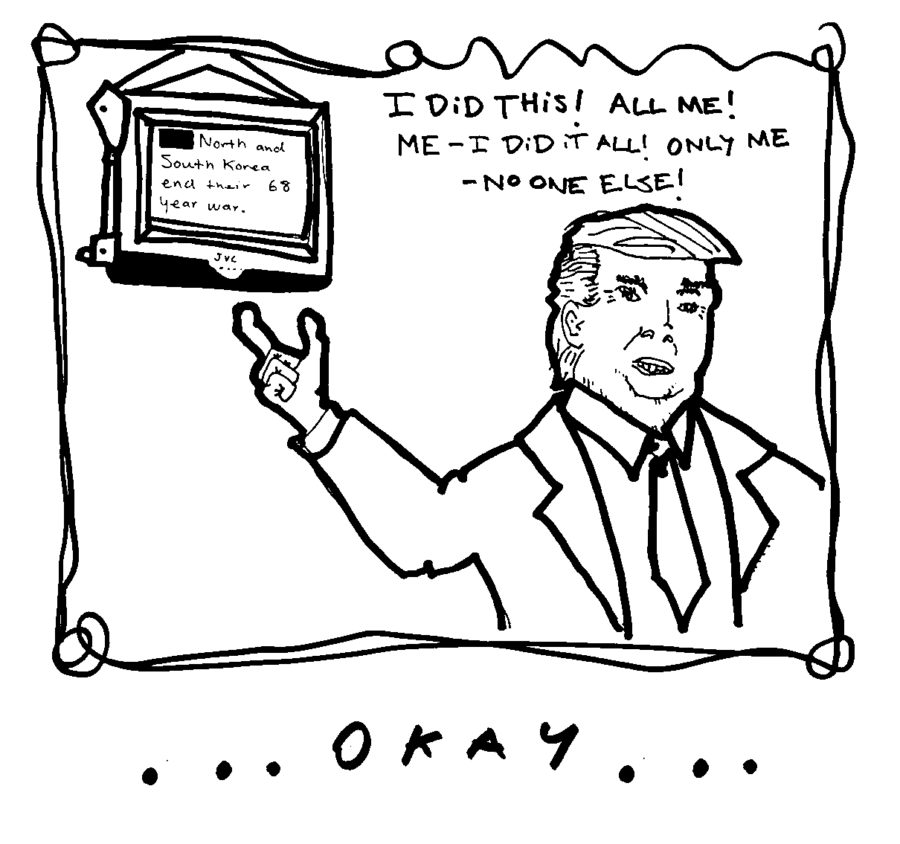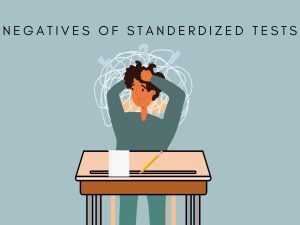North Korea seeks peace with South Korea and the US
Many are surprised at North Korea’s recent peaceful meetings with South Korea, but the history of North Korea is important context to understanding the current events.
May 10, 2018
For the past few years, North Korea has been the subject and cause of many events in the world news. To call the relationship between the United States and North Korea complex would be a major understatement, but the topic seems to ignite interest in most people despite their opinions on it. While reading the daily headlines about the nation can be very informative, it is crucial to understand the history and context that pushed the situation to its current point.
World War II was the catalyst that separated Korea into North and South Korea. The United States divided the nation along the 38th parallel and established a strong anti-communist government in Seoul, South Korea. Meanwhile, Soviet Russia appointed Kim Il Sung, a young communist, to be the leader of North Korea in Pyongyang. According to an article on North Korea by The History Channel, both governments claimed ownership of the Korean peninsula, leading to the Korean War, when Kim Il Sung, backed by China and USSR, invaded South Korea. The United States supported South Korea, and after three years, an armistice was signed and the border between North and South Korea remained at the 38th parallel.
After the Korean War, Kim Il Sung made huge changes in North Korea based on the idea of self-reliance. He took control over the economy and private property, meanwhile placing tight restrictions on travel into or out of the country and creating state-run media. This is when North Korea began to look a lot like it is today.
Modern North Korea is a rather mysterious place, as the few people that are allowed to visit the country can only see what the government allows them to see.
There has been tension between North Korea and the United States ever since the early 2000s when it was suspected that North Korea was researching nuclear weapons. This tension has carried into recent times as North Korea has made many threats against the US. With the inauguration of President Donald Trump, the relationship between the two countries grew worse; more threats came in and Trump responded with quite a few inflammatory tweets.
The dynamic of North Korea’s relationship with the United States, as well as their relationship with South Korea, has taken a huge turn in the past couple of weeks alone. Seemingly out of nowhere, Kim Jong Un held a meeting on South Korean soil with Moon Jae-in, the leader of South Korea, a meeting that will certainly go down in history. The two countries agreed to begin a peaceful relationship, and according to The New York Times, they plan to finally put an official end to the Korean War. Kim Jong Un has also agreed to meet with President Trump, get rid of all nuclear weapons, and according to Business Insider, North Korea released three American citizens that have been imprisoned in North Korea.
These recent events were completely unexpected out of a time with such high tension. North Korea’s relations with the outside world quickly transitioned from consisting of nuclear war threats to talks of peace and unification. Mixed opinions have been expressed regarding North Korea’s talks with South Korea and the United States; some believe it will result in peace and prosperity while others think it will be a mistake for the United States to get involved, or that North Korea might have ulterior motives. Regardless of what this twist of events results in, the meeting between the Koreas will certainly go down in history. It’s almost surreal to watch events unfold while knowing they’re causing significant changes in the world, and in order to comprehend these kinds of events, it’s crucial to have the background knowledge and to have a decent idea of the history behind them.
Your turn: What do you think about the recent events regarding North Korea? Is it a good idea for North Korea to make peace with South Korea and the US?









